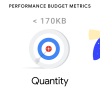
There is so much to love about this piece, especially this bit:
Honestly — what technology are you using that’s not assistive? Your smartphone? Your eyeglasses? Headphones? And those three examples alone are assisting you in multiple registers: They’re enabling or augmenting a sensory experience, say, or providing navigational information. But they’re also allowing you to decide whether to be available for approach in public, or not; to check out or in on a conversation or meeting in a bunch of subtle ways; to identify, by your choice of brand or look, with one culture group and not another.
Making a persistent, overt distinction about “assistive tech” embodies the second-tier do-gooderism and banality that still dominate design work targeted toward “special needs.” “Assistive technology” implies a separate species of tools designed exclusively for those people with a rather narrow set of diagnostic “impairments” — impairments, in other words, that have been culturally designated as needing special attention, as being particularly, grossly abnormal. But are you sure your phone isn’t a crutch, as it were, for a whole lot of unexamined needs?
❤️





